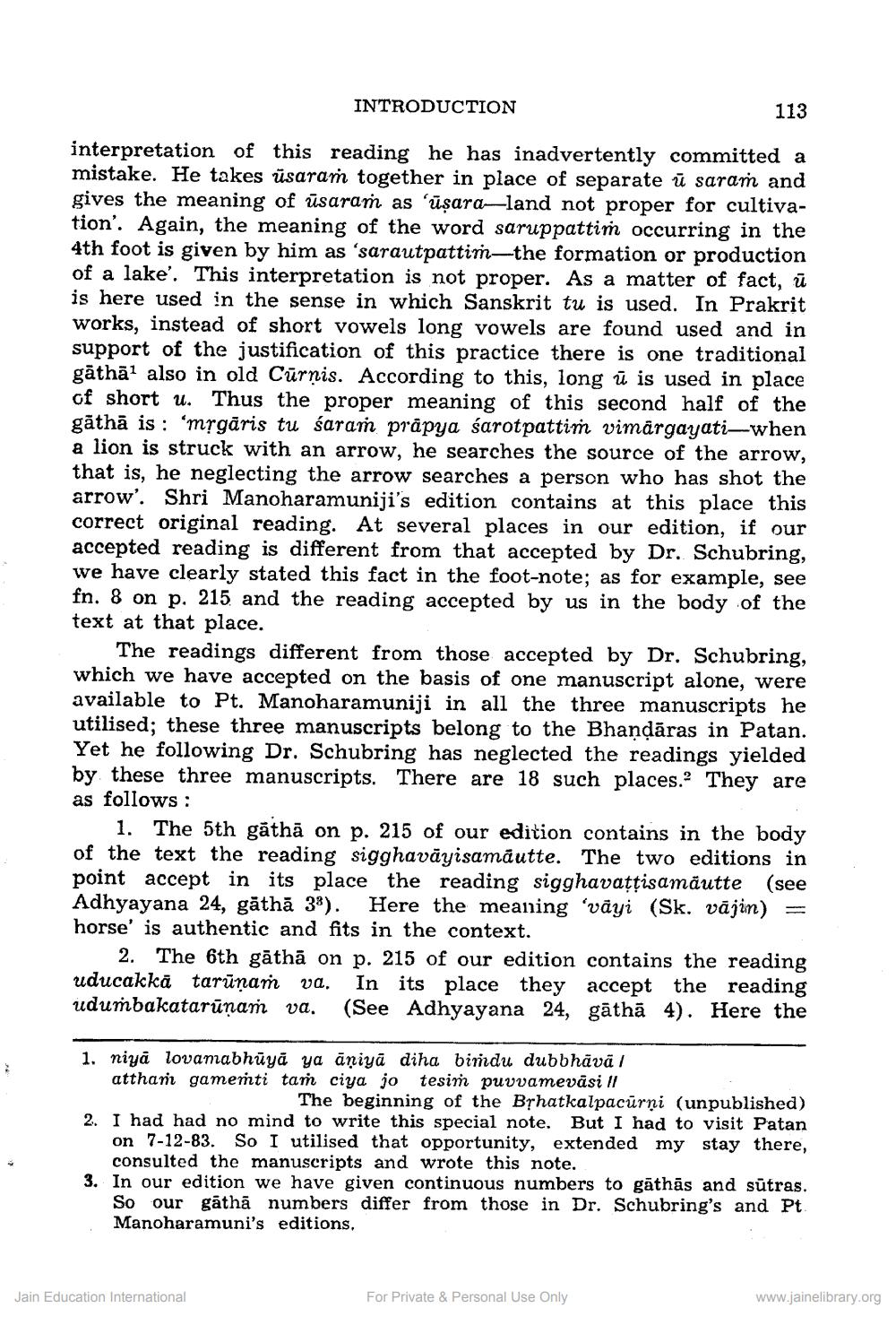________________
INTRODUCTION
113
interpretation of this reading he has inadvertently committed a mistake. He takes ūsaram together in place of separate ū saraṁ and gives the meaning of ūsaram as 'ūsara-land not proper for cultivation'. Again, the meaning of the word saruppattim occurring in the 4th foot is given by him as 'sarautpattim—the formation or production of a lake'. This interpretation is not proper. As a matter of fact, ū is here used in the sense in which Sanskrit tu is used. In Prakrit works, instead of short vowels long vowels are found used and in support of the justification of this practice there is one traditional gāthā? also in old Cūrnis. According to this, long ū is used in place of short u. Thus the proper meaning of this second half of the găthā is : 'mrgāris tu śaram prāpya sarot pattim vimârgayati-when a lion is struck with an arrow, he searches the source of the arrow, that is, he neglecting the arrow searches a person who has shot the arrow'. Shri Manoharamuniji's edition contains at this place this correct original reading. At several places in our edition, if our accepted reading is different from that accepted by Dr. Schubring, we have clearly stated this fact in the foot-note; as for example, see fn. 8 on p. 215. and the reading accepted by us in the body of the text at that place.
The readings different from those accepted by Dr. Schubring, which we have accepted on the basis of one manuscript alone, were available to Pt. Manoharamuniji in all the three manuscripts he utilised; these three manuscripts belong to the Bhandāras in Patan. Yet he following Dr. Schubring has neglected the readings yielded by these three manuscripts. There are 18 such places. They are as follows:
The 5th gathā on p. 215 of our edition contains in the body of the text the reading sigghavāyisamăutte. The two editions in point accept in its place the reading sigghavattisamăutte (see Adhyayana 24, găthā 3). Here the meaning 'vāyi (Sk. vājin) = horse' is authentic and fits in the context.
2. The 6th gathā on p. 215 of our edition contains the reading uducakka tarūņam va. In its place they accept the reading udumbakatarūnan va. (See Adhyayana 24, gāthā 4). Here the
1. niya lovamabhūya ya aniyā diha bindu dubbhāvā / atthar gamemti tań ciya jo tesiṁ puvvamevāsi Il
The beginning of the Bșhatkalpacūrni (unpublished) 2. I had had no mind to write this special note. But I had to visit Patan
on 7-12-83. So I utilised that opportunity, extended my stay there,
consulted the manuscripts and wrote this note. 3. In our edition we have given continuous numbers to gāthās and sūtras.
So our gāthā numbers differ from those in Dr. Schubring's and Pt. Manoharamuni's editions,
nuscripts that opporcianote.atkalpacūrni
Jain Education International
For Private & Personal Use Only
www.jainelibrary.org




